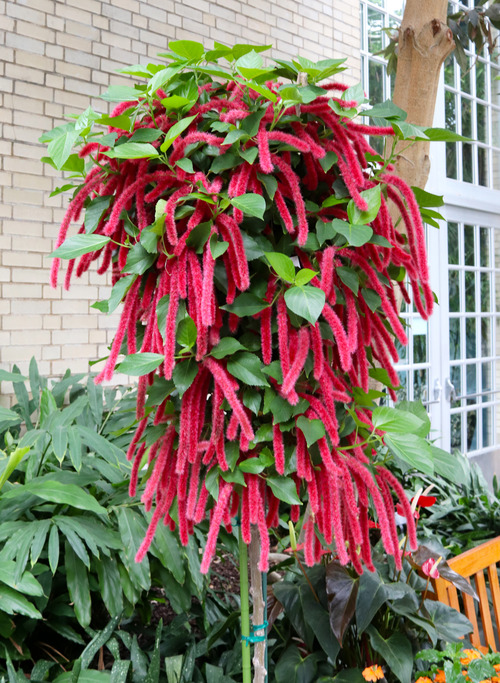Understanding Chenille Plants Basics
Chenille Plants, scientifically known as Acalypha hispida, are native to tropical regions. They are famous for their long, fluffy flower spikes that resemble catkins, commonly in shades of red and pink. These plants can grow up to 6 feet tall, making them excellent for creating vertical interest in your garden. They thrive in warm, humid conditions and can be grown both indoors and outdoors. When cultivating Chenille Plants, it’s essential to understand their basic needs, which include ample sunlight, well-draining soil, and regular watering. By meeting these fundamental requirements, you can ensure that your Chenille Plants grow robust and vibrant, adding a unique flair to your garden landscape.
Choosing the Right Location
Selecting the perfect spot for your Chenille Plant is crucial for its growth and vibrancy. These plants flourish in locations that receive plenty of sunlight, ideally six to eight hours of direct sunlight per day. However, they can tolerate partial shade, especially in hotter climates where too much direct sun might scorch the leaves. If you are growing them indoors, place them near a south or west-facing window to maximize light exposure. Additionally, ensure the location has good air circulation to prevent fungal diseases. By choosing the right spot, you provide your Chenille Plant with the best conditions to thrive, ensuring it becomes a standout feature in your garden or home.
Preparing the Soil
To give your Chenille Plant the best start, preparing the soil correctly is essential. Chenille Plants thrive in soil that drains well and is rich in organic matter. A mix of garden soil and compost works well, providing the necessary nutrients and structure. Aim for a slightly acidic to neutral pH, around 6.0 to 7.0, to optimize nutrient uptake. If your garden soil is heavy or clay-like, consider amending it with sand or perlite to improve drainage. Good soil preparation ensures that your Chenille Plant’s roots can establish themselves quickly, leading to healthier growth and more vibrant blooms. Taking the time to properly prepare the soil will pay off with a flourishing and visually stunning plant.
Watering and Feeding
Proper watering and feeding are crucial for maintaining a healthy Chenille Plant. These plants thrive in consistently moist soil, making regular watering essential. However, it’s important to avoid waterlogging, as it can cause root rot. A useful guideline is to water the Chenille Plant when the surface inch of soil feels dry to the touch.
During the growing season (typically spring through early fall), Chenille Plants benefit from regular feeding with a balanced, water-soluble fertilizer every two to four weeks. This feeding regimen supports vigorous growth and vibrant blooms. In the winter months, reduce both watering and feeding, as the plant’s growth slows down.
By carefully managing water and nutrients throughout the year, you can ensure your Chenille Plant remains lush and healthy.
Pruning and Shaping
Pruning and shaping your Chenille Plant are important for maintaining its appearance and encouraging healthy growth. Regular pruning helps remove dead or damaged branches, promoting better air circulation and reducing the risk of disease. It also maintains the plant’s desired shape and size, preventing it from becoming unruly.
Use sharp, clean pruning shears to make cuts just above a leaf node, which encourages new growth and keeps the plant tidy. For optimal results, prune your Chenille Plant in early spring before new growth begins. Additionally, periodically deadhead spent flowers to encourage continuous blooming.
By staying on top of pruning and shaping, you can ensure your Chenille Plant remains a beautiful and manageable addition to your garden.
Managing Pests and Diseases
Keeping your Chenille Plant free from pests and diseases is crucial for its health. Common pests include aphids, spider mites, and whiteflies, which can damage the plant by sucking sap from the leaves. Regularly inspect your plant for signs of infestation, such as discolored or curling leaves. If pests are detected, treat the plant with insecticidal soap or neem oil, applying it thoroughly to affected areas. Diseases like root rot and leaf spot can also affect Chenille Plants, often due to overwatering or poor air circulation. To prevent these issues, ensure proper watering practices and good air flow around the plant. If disease symptoms appear, remove affected parts and treat with appropriate fungicides. By actively managing pests and diseases, you can keep your Chenille Plant healthy and thriving.


